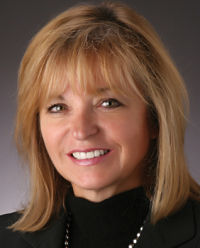 Companies' efforts to improve their working capital seem to be lagging.
Companies' efforts to improve their working capital seem to be lagging.
NACHA's recent decision to provide same-day settlement of ACH transactions should be a plus going forward for working capital at companies that use ACH to make payments or that receive a lot of consumer payments via ACH. However, a couple of recent surveys suggest that over the past year companies made little headway in freeing up more of their cash through receivables, payables, or inventory.
Consulting company REL's annual benchmarking of working capital at 1,000 large corporations showed there was no change last year in the average organization's cash conversion cycle, a measure of the time it takes a company to recoup the money it spends producing goods by collecting from its customers.
REL argues that low interest rates have encouraged companies to rely on borrowing instead of doing the work to free up cash internally.
“With the low interest rates and the fact that debt is cheap, there is less willingness to go after working capital improvements because that is not always straightforward,” said Craig Bailey, a project manager at REL. “That requires process changes, looking deep within organizations to understand where the opportunities are.”
Making changes in inventories could require altering the way the company does business, he said, while trying to squeeze more cash from receivables and payables involves conversations with buyers and suppliers “that people don't always want to have.”
“What we're seeing is less willingness to go after that because really money is available through borrowing,” Bailey said.
REL's analysis of the financial filings of the 1,000 largest nonfinancial corporates in the U.S. shows an average increase in debt of 62% since 2007. Meanwhile, the cash conversion cycle was unchanged in 2014 at 33 days; it has improved only one day since 2007, when it stood at 34 days.
 Inventories were basically flat in 2014, showing 0.1 day of improvement, Bailey said, while payables performance deteriorated by 0.4 days. The benchmarking showed one day's improvement in receivables, but he called that “misleading” because it was driven by the oil and gas industry and reflected the movement in crude oil prices late last year. “When we strip out oil and gas, the improvement effectively disappears,” said Bailey, pictured at left.
Inventories were basically flat in 2014, showing 0.1 day of improvement, Bailey said, while payables performance deteriorated by 0.4 days. The benchmarking showed one day's improvement in receivables, but he called that “misleading” because it was driven by the oil and gas industry and reflected the movement in crude oil prices late last year. “When we strip out oil and gas, the improvement effectively disappears,” said Bailey, pictured at left.
Companies have to be concerned not only with making improvements in their working capital measures, but with maintaining the improvements they've already made, he said.
“A lot of companies struggle with sustainability,” he said, and noted that while companies may reduce the payment terms they offer to customers and push out the payment terms for their suppliers, “the door is always open for pushback and negotiation.
“We often see that if people do accept a change in terms, they'll accept it for a couple of years and then they'll come back and try to renegotiate,” Bailey said. Because inventories are controlled internally, improvements in that area are more sustainable, he added.
Bailey predicted that companies will rethink their reliance on debt as rates start to rise. “It's normally when interest rates are higher that companies will look at their own working capital to see how they can reach that cash that is locked up,” he said.
Collections Side of the Equation
A separate survey, conducted by technology provider SunGard, asked 400 executives about their companies' credit and collections policies. It found that just 14% of the executives think their days sales outstanding (DSO) performance is above average for their industry, while 30% judge their company to be average in DSO and 21% think it's below average. (Thirty-five percent said they weren't sure how their DSO performance compared.) C.J. Wimley, chief operating officer of SunGard's AvantGard Receivables business, noted that 19% of the survey respondents said they had seen an increase in their DSO measure in the latest year, up from the 15% that cited an increase in DSOs in last year's survey. Wimley linked that change to customers' requests for longer payment terms.
“Over the last six or seven years, especially after the financial crisis, I think you're seeing a more concerted effort from large customers to ask for extended terms,” he said. “If those terms are granted, they are going to impact DSOs.”
The biggest problem that respondents saw, cited by 24% of the survey's respondents, was that as revenues have grown, the work of collections has increased but companies haven't boosted the number of workers involved in collections.
Given those constraints, Wimley said, the use of technology and centralization may help companies improve their DSOs. While companies initially saw the move to shift accounts receivable work into shared service centers as a cost-cutting measure, “now they realize they can gain efficiencies,” he said.
Wimley cited predictive analytics as another way to improve collections and DSOs. “Risk analytics, doing the statistical analysis of these portfolios and driving the collection activity to the highest risk in the portfolio, is really what can be the most effective best practice for organizations, and that's going to have the largest impact on increasing that cash flow,” he said.
Same-day ACH
One bright spot for companies' working capital management efforts could be the recently announced move to same-day ACH settlement.
Most ACH payments now settle next day. But in May, NACHA voted to provide same-day settlement starting in September 2016. Same-day settlement will coexist with regular settlement. It will not be available for international transactions or transactions whose value exceeds $25,000.
Cindy Murray, head of global treasury product platforms and digital channels at Bank of America Merrill Lynch, said same-day settlement could improve working capital for companies that use ACH to pay their vendors or other parties because the companies would get to hold onto their cash longer.
 “You can gain a day in certain types of payments,” said Murray, pictured at right. “Things like emergency payroll and vendor payments certainly fall into the category.”
“You can gain a day in certain types of payments,” said Murray, pictured at right. “Things like emergency payroll and vendor payments certainly fall into the category.”
The companies that benefit most, though, are likely to be those that have a lot of consumers paying them via ACH, Murray said.
“The premise is that the cash conversion cycle will be faster,” she said. “If you're receiving more ACH payments on a same-day basis, it should improve your working capital position and reduce short-term financing.”
Companies with a significant volume of consumer payments, such as utilities and insurers, “generally have payment gateways,” Murray said. “They could create files and send those files on a same-day basis, and apply that cash as well as update their billing systems.” The move to same-day settlement and the faster updating of billing systems will also help companies improve customer service, she said.
But it's not clear how many payments will qualify for same-day settlement given the $25,000 limit, Murray said.
For example, retailers' receipts from customers' debit and credit card purchases are typically rolled up into a single transaction that likely would exceed that limit, she said. “So you are not going to be able to use a one-size-fits-all approach—the impact of same-day ACH will vary by industry. Clients are looking at the impact on working capital and their ability to forecast payments that come in late in the day, as enabled by same-day ACH.”
Murray said she's hearing from treasurers that they would prefer a higher cap on same-day ACH settlement so they could replace more wire transfers, which cost more, with less-expensive ACH payments.
REL's Bailey said accelerating the transfer of funds should bolster working capital. “Certainly cutting out any days of delays will help companies to receive their cash quicker, and that will be reflected in their working capital,” he said.
© 2025 ALM Global, LLC, All Rights Reserved. Request academic re-use from www.copyright.com. All other uses, submit a request to [email protected]. For more information visit Asset & Logo Licensing.




